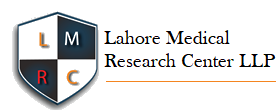Adverse Effects of Heavy Metals on Aquatic life
DOI:
https://doi.org/10.54393/mjz.v2i2.17Keywords:
Cadmium, Chromium, Lead, Heavy metals, Aquatic animalsAbstract
The metals that are highly dense and toxic at low quantities are termed as heavy metals. These metals include Lead, Mercury, Cadmium, Copper, Zinc, Manganese, Nickel, Arsenic and Silver etc. Among these metals Arsenic, Cadmium, Chromium and Lead are considered most toxic to humans, animals and fish. Heavy metals enter the aquatic ecosystem through disposal of industrial, agricultural and municipal wastes and bioaccumulates in the food chain. Chromium is generally present in aquatic ecosystems between the range 1-10 µg/L which is highly toxic. Higher concentration of Chromium in aquatic ecosystem can result in accumulation in fish and have adverse effects on consumers’ health. Cadmium and Lead deposit on the gills of the fish and cause suffocation which may lead to death of the fish. Accumulation of Cadmium is generally associated with organ damage and anemia that results in death of the fish and its consumer. In the presence of Cadmium, the toxicity of Lead generally increases the toxicity drastically in Gambusia affinis.
References
Rahman Z and VP Singh The relative impact of toxic heavy metals (THMs)(arsenic (As), cadmium (Cd), chromium (Cr)(VI), mercury (Hg), and lead (Pb)) on the total environment: an overview. Environmental monitoring and assessment, 2019. 191(7): 1-21. doi: 10.1007/s10661-019-7528-7.
Ferreira LM, et al. Impact of carcinogenic chromium on the cellular response to proteotoxic stress. International journal of molecular sciences, 2019. 20(19): 4901.doi.org/10.3390/ijms20194901
Pandey G and Madhuri S. Heavy metals causing toxicity in animals and fishes. Research Journal of Animal, Veterinary and Fishery Sciences, 2014. 2(2): 17-23. doi:10.1088/1742-6596/1294/6/062028
Sparks C, Odendaal J and Snyman R. Metal concentrations in intertidal water and surface sediment along the west coast of the Cape Peninsula, Cape Town, South Africa. Water Sa, 2017. 43(1): 17-24. doi: 10.4314/wsa.v43i1.03
Khalili Tilam S and Sampels S. Nutritional value of fish: lipids, proteins, vitamins, and minerals. Reviews in Fisheries Science & Aquaculture, 2018. 26(2): 243-253. doi.org/10.1080/23308249.2017.1399104
Yılmaz F et al.. Heavy metal levels in two fish species Leuciscus cephalus and Lepomis gibbosus. Food chemistry, 2007. 100(2): 830-835. doi.org/10.1016/j.foodchem.2005.09.020
Zhao S et al.. Role of living environments in the accumulation characteristics of heavy metals in fishes and crabs in the Yangtze River Estuary, China. Marine pollution bulletin, 2012. 64(6): 1163-1171. doi.org/10.1016/j.marpolbul.2012.03.023
Al-Busaidi M et al.. Toxic metals in commercial marine fish in Oman with reference to national and international standards. Chemosphere, 2011. 85(1): 67-73. doi: 10.1016/j.chemosphere.2011.05.057.
Rahman MS et al. Study on heavy metals levels and its risk assessment in some edible fishes from Bangshi River, Savar, Dhaka, Bangladesh. Food chemistry, 2012. 134(4): 1847-1854. doi.org/10.1016/j.foodchem.2012.03.099
Saleh YS and Marie M-AS. Assessment of metal contamination in water, sediment, and tissues of Arius thalassinus fish from the Red Sea coast of Yemen and the potential human risk assessment. Environmental Science and Pollution Research, 2015. 22(7): 5481-5490. doi: 10.1007/s11356-014-3780-0.
Lunk H-J. Discovery, properties and applications of chromium and its compounds. ChemTexts, 2015. 1(1): 1-17. doi.org/10.1007/s40828-015-0007-z
Witeska M et al. The effects of cadmium and copper on embryonic and larval development of ide Leuciscus idus L. Fish physiology and biochemistry, 2014. 40(1): 151-163. doi: 10.1007/s10695-013-9832-4.
Aslam S and Yousafzai AM. Chromium toxicity in fish: A review article. Journal of Entomology and Zoology Studies, 2017. 5(3): p. 1483-1488.
Farag AM et al. The effect of chronic chromium exposure on the health of Chinook salmon (Oncorhynchus tshawytscha). Aquatic toxicology, 2006. 76(3-4): 246-257. doi: 10.1016/j.aquatox.2005.09.011.
Arunkumar RI, Rajasekaran P and Michael RD. Differential effect of chromium compounds on the immune response of the African mouth breeder Oreochromis mossambicus (Peters). Fish & Shellfish Immunology, 2000. 10(8): 667-676. doi: 10.1006/fsim.2000.0281.
Lushchak V et al. Chromium (III) induces oxidative stress in goldfish liver and kidney. Aquatic Toxicology, 2009. 93(1): 45-52. doi: 10.1016/j.aquatox.2009.03.007.
Li Z-H, Li P and Randak T. Evaluating the toxicity of environmental concentrations of waterborne chromium (VI) to a model teleost, Oncorhynchus mykiss: a comparative study of in vivo and in vitro. Comparative Biochemistry and Physiology Part C: Toxicology & Pharmacology, 2011. 153(4): 402-407. doi: 10.1016/j.cbpc.2011.01.005.
Reid SD. Molybdenum and chromium, in Fish physiology. 2011, Elsevier. p. 375-415.
Ahmed, M., et al. Chromium (VI) induced acute toxicity and genotoxicity in freshwater stinging catfish, Heteropneustes fossilis. Ecotoxicology and environmental safety, 2013. 92: 64-70. doi: 10.1016/j.ecoenv.2013.02.008.
Vera-Candioti J, Soloneski S and Larramendy ML. Acute toxicity of chromium on Cnesterodon decemmaculatus (pisces: poeciliidae)(La toxicidad aguda del cromo en Cnesterodon decemmaculatus (pisces: poeciliidae)). Theoria, 2011: 81-88.
Karadede H, Oymak SA and Ünlü E. Heavy metals in mullet, Liza abu, and catfish, Silurus triostegus, from the Atatürk Dam Lake (Euphrates), Turkey. Environment International, 2004. 30(2): 183-188. doi: 10.1016/S0160-4120(03)00169-7.
Morrow H. Cadmium and cadmium alloys. Kirk‐Othmer Encyclopedia of Chemical Technology, 2000: 1-36. doi.org/10.1002/0471238961.0301041303011818.a01.pub3
Liao C-M et al. Assessing the impact of waterborne and dietborne cadmium toxicity on susceptibility risk for rainbow trout. Science of the total environment, 2011. 409(3): 503-513. doi: 10.1016/j.scitotenv.2010.10.044.
Sfakianakis D et al. Effect of heavy metals on fish larvae deformities: a review. Environmental research, 2015. 137: 246-255. doi: 10.1016/j.envres.2014.12.014.
Friberg L. Cadmium in the Environment. 2018: CRC press.
Kalman J et al. Comparative toxicity of cadmium in the commercial fish species Sparus aurata and Solea senegalensis. Ecotoxicology and environmental safety, 2010. 73(3): 306-311. doi: 10.1016/j.ecoenv.2009.10.013.
Chary NS, Kamala C and Raj DSS. Assessing risk of heavy metals from consuming food grown on sewage irrigated soils and food chain transfer. Ecotoxicology and environmental safety, 2008. 69(3): p. 513-524. doi: 10.1016/j.ecoenv.2007.04.013.
Nriagu JO and Pacyna JM. Quantitative assessment of worldwide contamination of air, water and soils by trace metals. nature, 1988. 333(6169): 134-139. doi: 10.1038/333134a0.
Järup, L. Hazards of heavy metal contamination. British medical bulletin, 2003. 68(1): p. 167-182. doi: 10.1093/bmb/ldg032.
Chowdhury M, McDonald D and Wood C. Gastrointestinal uptake and fate of cadmium in rainbow trout acclimated to sublethal dietary cadmium. Aquatic Toxicology, 2004. 69(2): 149-163. doi: 10.1016/j.aquatox.2004.05.002.
Bradl H. Heavy metals in the environment: origin, interaction and remediation. 2005: Elsevier.
Omer SA et al. Cadmium bioaccumulation and toxicity in tilapia fish (Oreochromis niloticus). Journal of animal and veterinary advances, 2012. 11(10): 1601-1606.
Mansour S and Sidky M. Ecotoxicological studies. 3. Heavy metals contaminating water and fish from Fayoum Governorate, Egypt. Food chemistry, 2002. 78(1): 15-22. doi.org/10.1016/S0308-8146(01)00197-2
Ede A and Cormack LB. A History of Science in Society, Volume II: From the Scientific Revolution to the Present. 2016: University of Toronto Press.
Angier N. The pernicious allure of lead. New York Times. http://www. nytimes. com/2007/08/21/science/21angi. html, 2007.
Monteiro V et al. In vivo and in vitro exposures for the evaluation of the genotoxic effects of lead on the Neotropical freshwater fish Prochilodus lineatus. Aquatic toxicology, 2011. 104(3-4): 291-298. doi: 10.1016/j.aquatox.2011.05.002.
Cretì P, Trinchella F and Scudiero R. Heavy metal bioaccumulation and metallothionein content in tissues of the sea bream Sparus aurata from three different fish farming systems. Environmental monitoring and assessment, 2010. 165(1): 321-329. doi: 10.1007/s10661-009-0948-z.
Olojo E et al. Histopathology of the gill and liver tissues of the African catfish Clarias gariepinus exposed to lead. African Journal of Biotechnology, 2005. 4(1): 117-122.
Nkoba HT et al. The effects of Aluminium waterbone exposure to mixtures of Cadmium and Lead on growth and mortality of mosquito fish Gambusia affinis H.(Poescillidae, Pisces). International Journal of Innovation and Applied Studies, 2020. 29(3): 790-793.
Downloads
Published
How to Cite
Issue
Section
License
Copyright (c) 2021 MARKHOR (The Journal of Zoology)

This work is licensed under a Creative Commons Attribution 4.0 International License.
This is an open-access journal and all the published articles / items are distributed under the terms of the Creative Commons Attribution License, which permits unrestricted use, distribution, and reproduction in any medium, provided the original author and source are credited. For comments editor@markhorjournal.com











